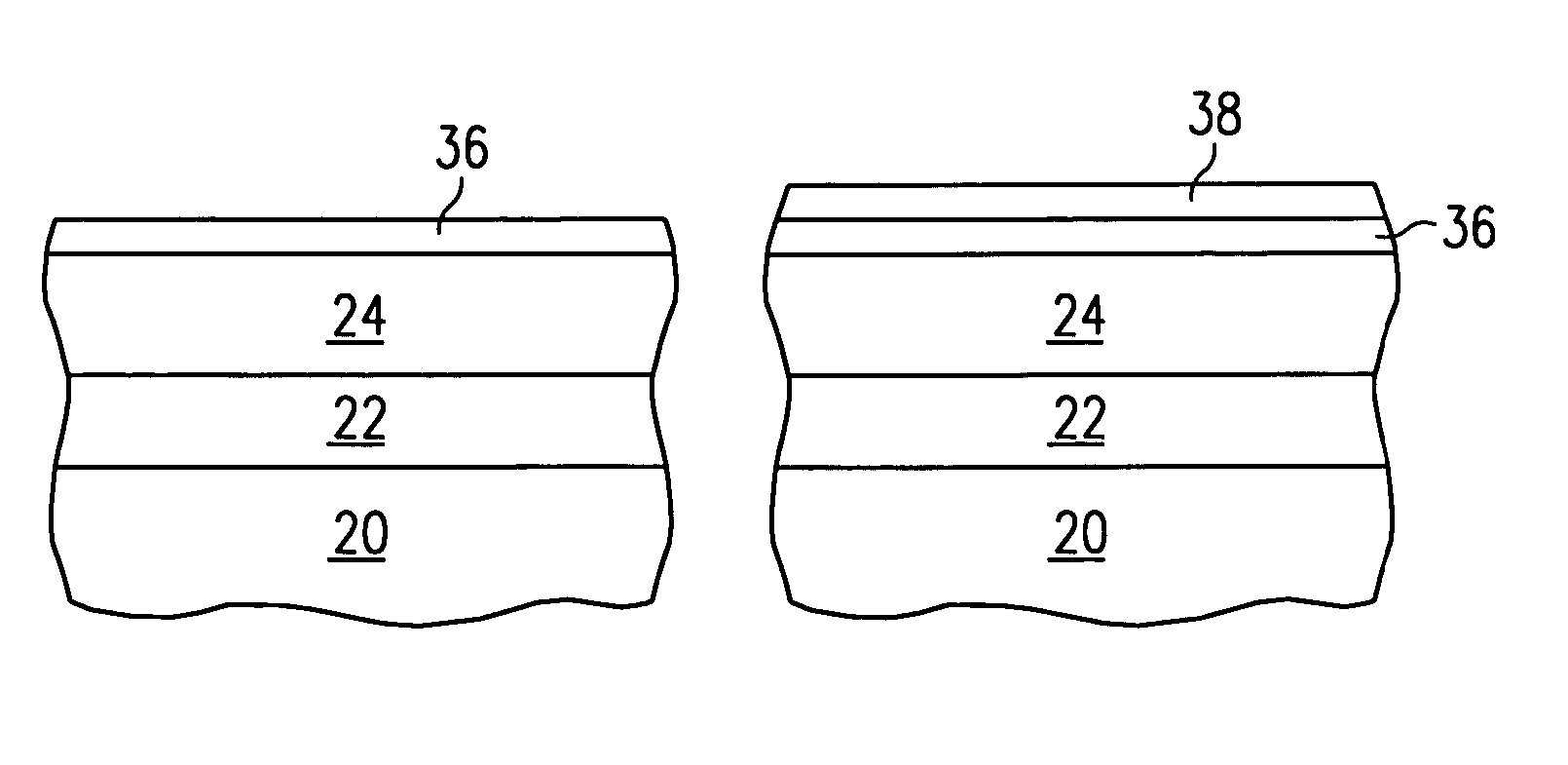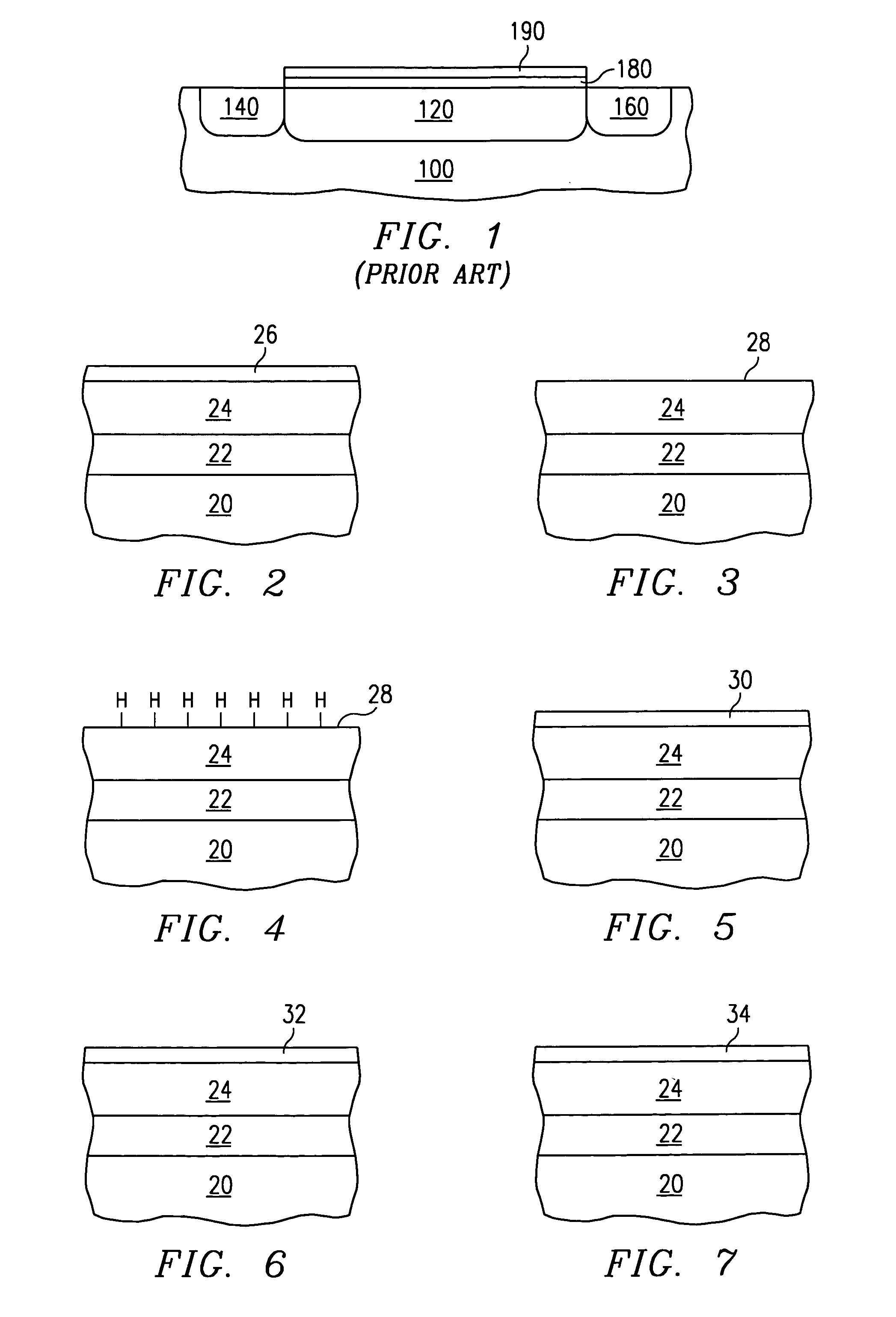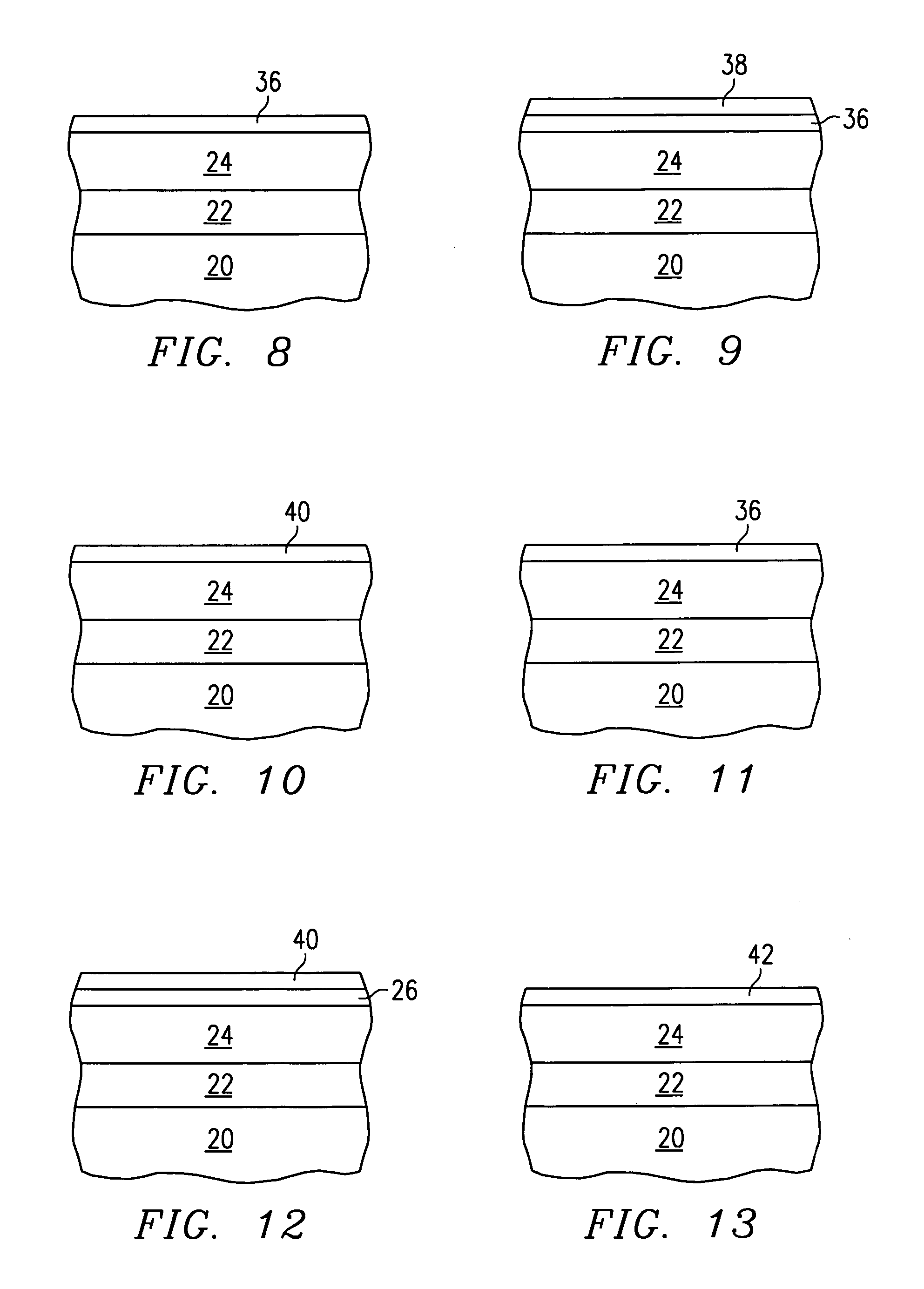High permittivity silicate gate dielectric
a gate dielectric, high permittivity technology, applied in the direction of semiconductor devices, basic electric elements, electrical equipment, etc., can solve the problems of reducing the output of the transistor, reducing the general structure and operation of the transistor, and high complexity of the transistor design and fabrication
- Summary
- Abstract
- Description
- Claims
- Application Information
AI Technical Summary
Benefits of technology
Problems solved by technology
Method used
Image
Examples
embodiment 1
[0036]In one embodiment according to the invention, a metal silicate gate dielectric is formed by depositing metal on a clean Si surface, annealing this structure to form a metal silicide, oxidizing the silicide layer, and annealing this structure. In this embodiment, a substrate such as shown in either FIG. 3 or FIG. 4 is used. If surface 28 is passivated as shown in FIG. 4, the substrate can be briefly heated to above 500° C. in vacuum or an inert ambient to remove the passivation.
[0037]Referring to FIG. 6, a metal layer 32 (e.g. zirconium or hafnium) is deposited directly on surface 28, e.g. by sputtering, evaporation, chemical vapor deposition (CVD) or plasma CVD. Sputter deposition is preferably done with a low-energy plasma system, such as collimated or long-throw sputtering; it should be noted that low deposition rates (e.g. on the order of a few angstroms per second) are preferred, as the total thickness to be deposited is small and uniformity is desired. For an 8″ wafer, de...
embodiment 2
[0043]In a second embodiment according to the invention, a metal silicate gate dielectric is formed by depositing metal on a substrate in an oxidizing ambient, followed by annealing. This embodiment preferably utilizes a substrate prepared by one of the methods corresponding to FIG. 2, 3, or 4, and the metal may be deposited by one of the methods described in Embodiment 1, with the following differences.
[0044]Referring to FIG. 10, an oxidized metal layer 40 may be deposited on a clean Si surface by sputtering as described above. However, some amount of controlled oxygen activity is used to at least partially oxidize layer 40 as metal is supplied to the substrate. For example, O2 or H2O+H2 may be introduced near the substrate during sputtering with Ar, with an O2 flow rate of about one-tenth that of the Ar flow rate. For a metal deposition rate of 0.1 nanometers per second, the oxidizing gas is preferably introduced from 0 to 5 seconds after the start of the deposition process.
[0045]...
embodiment 3
[0048]In a third embodiment according to the invention, a metal silicate gate dielectric is formed by depositing both metal and silicon on the substrate in an oxidizing ambient, followed by annealing. In this embodiment, the substrate preparation may be chosen as any of those shown in FIGS. 2–5. As this method generally does not rely on silicon from the substrate as a component of the silicate film, a surface that limits oxidation of the substrate, such as the diffusion barrier surface of FIG. 5, is preferred. The metal and silicon may be deposited by one of the methods described in Embodiment 1, with the following differences.
[0049]Referring to FIG. 13, an oxidized metal and silicon layer 42 may be deposited on a clean Si surface by sputtering as described in Embodiment 2 for the deposition of oxidized metal layer 40. The deposition of both metal and silicon is accomplished by replacing the metal target with an appropriate silicide target. The disadvantage of this method is that de...
PUM
| Property | Measurement | Unit |
|---|---|---|
| operating pressure | aaaaa | aaaaa |
| operating pressure | aaaaa | aaaaa |
| temperature | aaaaa | aaaaa |
Abstract
Description
Claims
Application Information
 Login to View More
Login to View More - R&D
- Intellectual Property
- Life Sciences
- Materials
- Tech Scout
- Unparalleled Data Quality
- Higher Quality Content
- 60% Fewer Hallucinations
Browse by: Latest US Patents, China's latest patents, Technical Efficacy Thesaurus, Application Domain, Technology Topic, Popular Technical Reports.
© 2025 PatSnap. All rights reserved.Legal|Privacy policy|Modern Slavery Act Transparency Statement|Sitemap|About US| Contact US: help@patsnap.com



